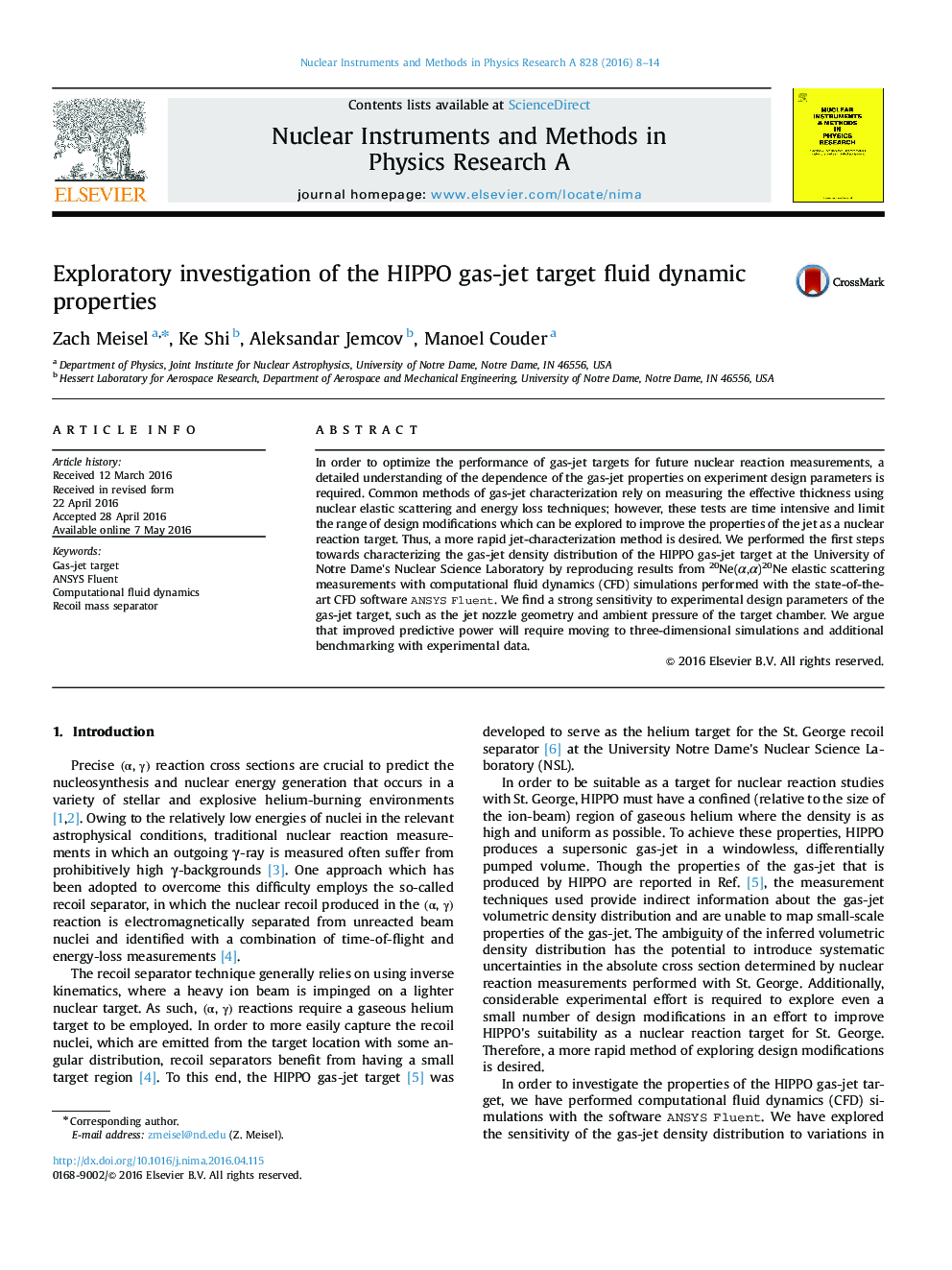| Article ID | Journal | Published Year | Pages | File Type |
|---|---|---|---|---|
| 1821996 | Nuclear Instruments and Methods in Physics Research Section A: Accelerators, Spectrometers, Detectors and Associated Equipment | 2016 | 7 Pages |
In order to optimize the performance of gas-jet targets for future nuclear reaction measurements, a detailed understanding of the dependence of the gas-jet properties on experiment design parameters is required. Common methods of gas-jet characterization rely on measuring the effective thickness using nuclear elastic scattering and energy loss techniques; however, these tests are time intensive and limit the range of design modifications which can be explored to improve the properties of the jet as a nuclear reaction target. Thus, a more rapid jet-characterization method is desired. We performed the first steps towards characterizing the gas-jet density distribution of the HIPPO gas-jet target at the University of Notre Dame's Nuclear Science Laboratory by reproducing results from 20Ne(α,α)20Ne elastic scattering measurements with computational fluid dynamics (CFD) simulations performed with the state-of-the-art CFD software ANSYS Fluent. We find a strong sensitivity to experimental design parameters of the gas-jet target, such as the jet nozzle geometry and ambient pressure of the target chamber. We argue that improved predictive power will require moving to three-dimensional simulations and additional benchmarking with experimental data.
